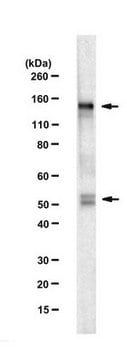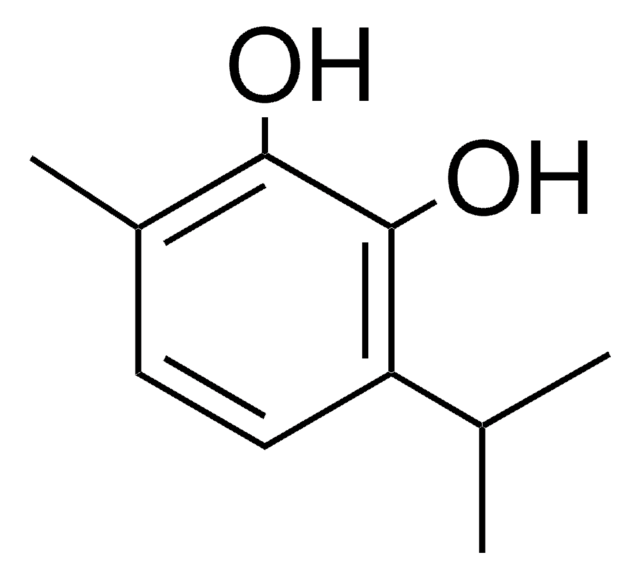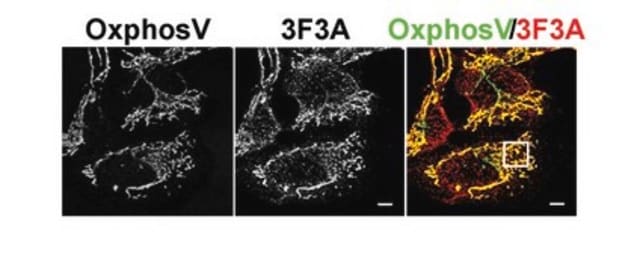Opis ogólny
Sterol regulatory element-binding protein 1 (UniProt: Q9WTN3; also known as SREBP-1, Sterol regulatory element-binding transcription factor 1) is encoded by the Srebf1 (also known as Srebp1) gene (Gene ID: 20787) in murine species. SREBPs are a family of transcription factors that regulate lipid homeostasis by controlling the expression of a range of enzymes that are required for endogenous cholesterol, fatty acid, triacylglyceride, and phospholipid synthesis. The three SREBP isoforms known as, SREBP-1a, SREBP-1c, and SREBP-2, have different roles in lipid synthesis. It has been reported that SREBP-1c is mainly involved in fatty acid synthesis and insulin induced glucose metabolism. SREBP-2 is mainly involved in cholesterol synthesis. SREBP-1a isoform is reported to be involved in both of these pathways. Isoform SREBP-1A predominates in spleen, while isoform IC predominates in liver, adrenal gland, brain and adipose tissue and both IA and IC are found in kidney, thymus, testis, muscle, jejunum, and ileum. Expression of SREBP-1C in the liver is reported to be controlled in a circadian manner with a peak at ZT16. SREBPs are synthetized as inactive precursor proteins that are bound to the endoplasmic reticulum membranes and upon activation, the precursor is cleaved off in a two-step process to release the N-terminal active domain in the nucleus. Sterols are shown to inhibit the cleavage of the precursor protein and the mature nuclear form is rapidly catabolized, thereby reducing transcription. SREBP-1 binds to the sterol regulatory element-1 (SRE1 5′-ATCACCCCAC-3′), which flanks the low density lipoprotein receptor gene and some genes involved in sterol biosynthesis. Mice overexpressing processed isoform SREBP-1A in adipocytes show enlarged white and brown adipocytes, increased rate of fatty acid synthesis and secretion leading to a fatty liver. Mice lacking isoform SREBP-1C show a lack of up-regulation of several lipogenic enzymes in response to high insulin or LXR activation. (Ref.: Eberle, D et al. (2004) Biochimie 86(11); 839-48).
Specyficzność
Clone 20B12 recognizes SREBP-1 in multiple human tissues.
Immunogen
His-tagged recombinant fragment corresponding to 219 amino acids from the N-terminal region of murine sterol regulatory element-binding protein 1.
Zastosowanie
Anti-SREBP-1, clone 20B12, Cat. No. MABS1987, a rabbit monoclonal antibody, detects SREBP-1 in human tissues by Western Blotting.
Research Category
Signaling
Western Blotting Analysis: A 1:1,000 dilution from a representative lot detected SREBP-1 in 10 µg of HEK293 cell lysates.
Jakość
Evaluated by Western Blotting in HepG2 cell lysates.
Western Blotting Analysis: A 1:1,000 dilution of this antibody detected SREBP-1 in 10 µg of HepG2 cell lysates.
Opis wartości docelowych
~120 kDa observed; 120.54 kDa calculated. Uncharacterized bands may be observed in some lysate(s).
Postać fizyczna
Format: Unpurified
Rabbit monoclonal antibody in cell culture supernatant without azide.
Unpurified
Przechowywanie i stabilność
Stable for 1 year at -20°C from date of receipt. Handling Recommendations: Upon receipt and prior to removing the cap, centrifuge the vial and gently mix the solution. Aliquot into microcentrifuge tubes and store at -20°C. Avoid repeated freeze/thaw cycles, which may damage IgG and affect product performance.
Inne uwagi
Concentration: Please refer to lot specific datasheet.
Oświadczenie o zrzeczeniu się odpowiedzialności
Unless otherwise stated in our catalog or other company documentation accompanying the product(s), our products are intended for research use only and are not to be used for any other purpose, which includes but is not limited to, unauthorized commercial uses, in vitro diagnostic uses, ex vivo or in vivo therapeutic uses or any type of consumption or application to humans or animals.









